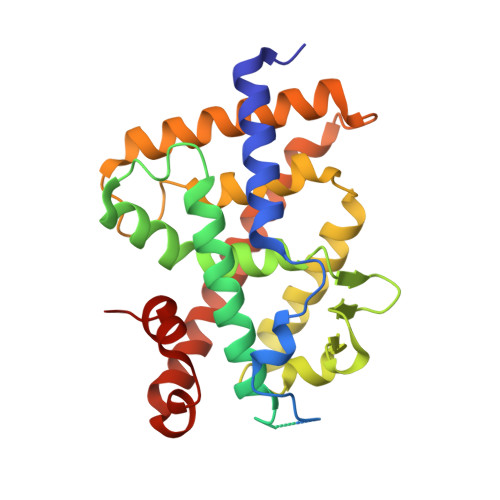Design, synthesis and evaluation of side-chain hydroxylated derivatives of lithocholic acid as potent agonists of the vitamin D receptor (VDR).
Gonzalez, C.M., Gaikwad, S., Lasanta, G., Loureiro, J., Nilsson, N., Peluso-Iltis, C., Rochel, N., Mourino, A.(2021) Bioorg Chem 115: 105202-105202
- PubMed: 34339974
- DOI: https://doi.org/10.1016/j.bioorg.2021.105202
- Primary Citation of Related Structures:
7OXZ, 7OY4 - PubMed Abstract:
A high number of biologically active and low-calcemic secosteroidal ligands of the vitamin D receptor (VDR) have been developed, some of which are already used clinically although with limited success in the treatment of hyperproliferative diseases because the required pharmaceutical dosages induce toxicity. We describe here the in silico design, synthesis, structural analysis and biological evaluation of two novel active lithocholic acid derivatives hydroxylated at the side chain as highly potent inhibitors of atopic dermatitis-relevant keratinocyte inflammation of potential therapeutic interest.
- Departamento de Química Orgánica, Laboratorio de Investigación Ignacio Ribas, Universidad de Santiago de Compostela, Avda das Ciencias s/n, 15782 Santiago de Compostela, Spain.
Organizational Affiliation:


















